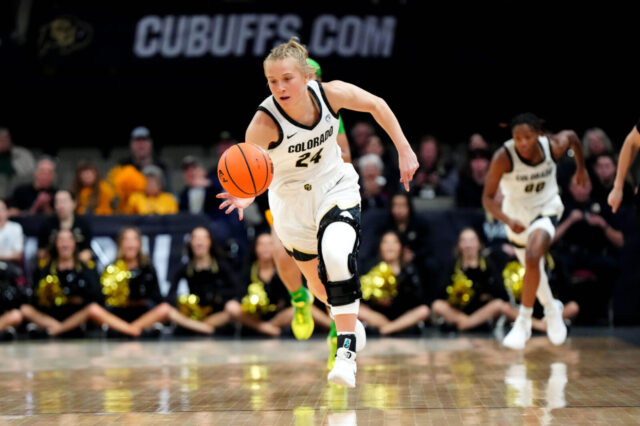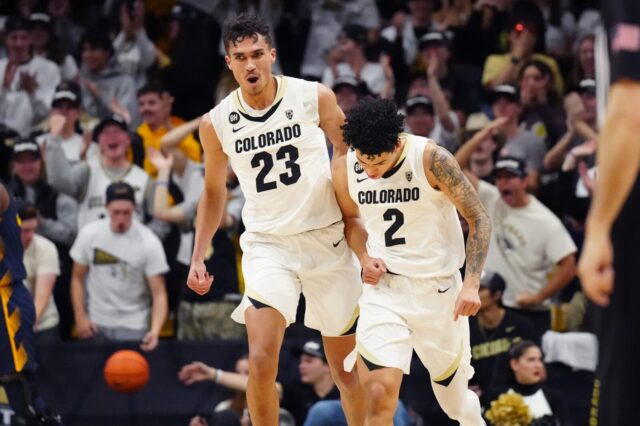We’re living in the era of the hurry up offense, so it’s no surprise that it’s been a fast-paced five years. It was this week in 2010 when the college sports landscape was changed forever.
If it wasn’t (relatively speaking) an earthquake, it was close. After several months of posturing, rumors flying on a hourly basis – including some real doozies – and intense back room debates, the University of Nebraska left the Big 12 for the better cultural fit of the Big Ten, with the University of Colorado doing the same, leaving all remnants of the old Big Eight behind and joining a more stable and lucrative Pacific-12 Conference. At one point, the University of Texas was going to take half the Big 12 with them and move west to form the Pac-16 – leaving out Baylor in favor of CU and causing all sorts of complaining from Waco – then suddenly they weren’t. Had that monumental move actually been made, schools like Kansas and Iowa State likely would have joined Colorado State in the Mountain West Conference, at least temporarily. How different our college sports landscape could have looked.
While things seemed to change hourly, ultimately only CU moved west and Nebraska east. But many more moves have followed, so the aftershocks were still coming as recently as last year. There are now 14 teams in the Big Ten and 14 in the Southeastern Conference, but just 10 in the Big 12. For football, the Big East and Western Athletic Conferences are gone. What had previously been six “major” (or “BCS”) conferences became five, and none of those five look much like they did five years ago.
Much has changed for CU athletics during the past five years. Results-wise, it’s been a mixed bag. The football team has struggled, but is showing signs of improvement in what some now believe is the deepest conference in the country. The basketball program has flourished under Tad Boyle, winning the conference tourney in the Buffs’ first season in the Pac-12 and advancing to the NCAA tournament three times. So-called “Olympic” sports like cross country have continued to thrive and should continue to do so in a conference that generates a great deal more revenue and a ton more exposure for them than the Big 12 ever did.
There are new athletic facilities on the Boulder campus opening very soon (the kind that would have allowed the Buffs to compete more favorably in their old conference). The Pac-12 TV Network – while a bit little slower to develop in comparison with the Big Ten Network – is now netting Colorado a full share of Pac-12 TV dollars, more than $20 million per year. It’s a big reason why they could build the new facilities.
Overall, Pac-12 membership has been very good to Colorado. Soon, it will be time for Colorado to step up and do something nice for the Pac-12 in return, namely bringing back baseball. There are currently 11 baseball programs in the Pac-12 conference. For things like scheduling balance and Pac-12 network TV broadcasts, a 12th team would be beneficial to the conference. It would also be beneficial for baseball fans of the region that are missing out on a great time.
The reason CU dropped baseball back in the early 1980’s was very simple: money. They didn’t have the revenue to sustain a quality program, even one that had produced big leaguers like Jay Howell and John Stearns. Compliance with Title IX was a huge factor in the axing of both baseball and wrestling. At the time, most people thought the loss of the two sports would be temporary. That was more than 30 years ago.
Fast forward to today, with the Buffs now residing in one of the best baseball conferences in the nation. Could they, should they, bring baseball back? Most of us – again – feel it’s only a matter of time. The question is, when? Unfortunately, there is still much more work to do on the revenue front first. Once the CU Athletic Department is in the black (three, four, five years?) and a new baseball stadium – which could become a revenue generator for the school – is built, Colorado can bring back the program that was dropped in 1982. Much is dependent on how much more local marketing dollars can be brought in to balance the books and get rid of the remaining red ink.
For fans, the College World Series starts this week. The games will be front and center on national TV, showcasing schools and athletes. While there are no Pac-12 teams left in this year’s tournament, the conference is and always will be a baseball hotbed. Programs like UCLA (ranked number one much of the season before being knocked out of the NCAA tournament by Maryland in the regionals), Arizona State, USC, Oregon, Stanford, Arizona and others are each nationally prominent every year. Even California (which at one point announced they were dropping the sport before reinstating it and advancing to the CWS in that same season) is a national player in baseball.
There is no reason CU could not achieve as much or more success in baseball as they’ve achieved in basketball. There’s plenty of baseball talent in the region to sustain a very competitive program, and any complaints about the weather come from people who have never spent a spring day in Big Ten country (the Big Ten had five schools qualify for the NCAA tournament).
It’s easy to envision a scenario where CU is hosting impactful Pac-12 games against the likes of Stanford, or USC or Arizona State on the weekend while playing mid-week home games against regional foes like Air Force, Nebraska, UNC, BYU and Wichita State. How cool would that be?
Alas, it won’t happen any time in the immediate future. A CU spokesman told me on the anniversary of the move to the Pac-12 that “it would be fiscally irresponsible to add any sports until we have taken care of all our debt and fully funded the sports we already have.” That means it could be another five years before CU seriously considers adding baseball and another women’s sport – presumably softball – to the department’s roster.
Then again, five years from now, it’s anyone’s guess as to what college sports will look like.



